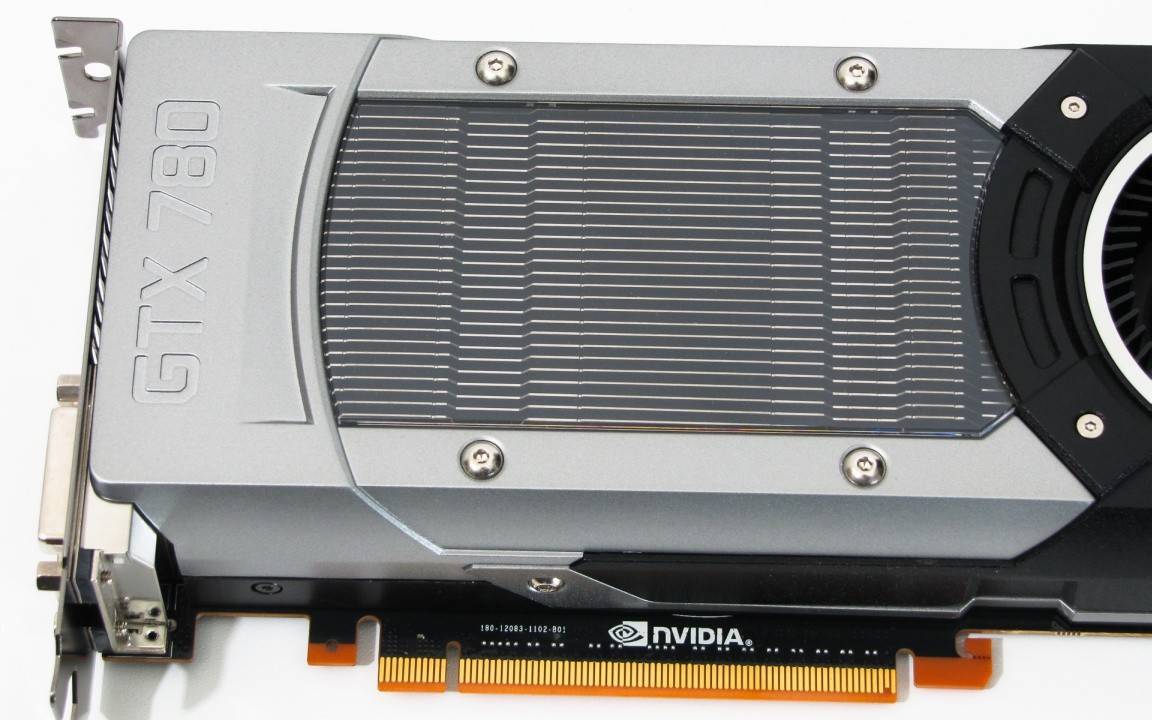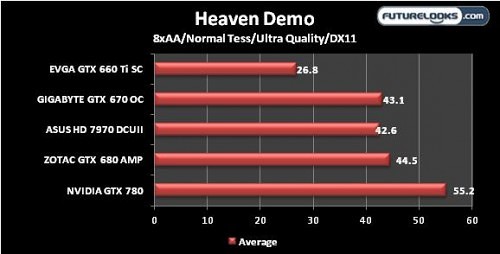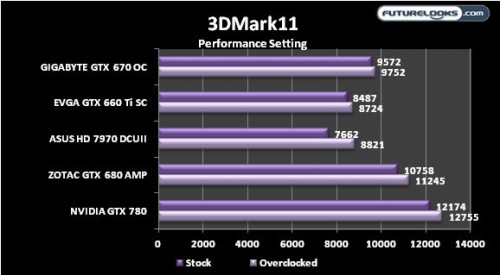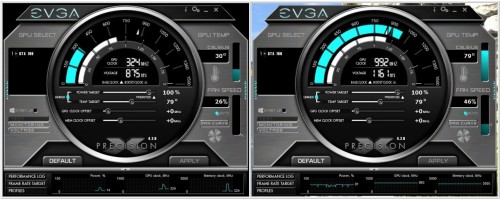Synthetic Gaming Benchmarks
While real world gaming benchmarks are essential, they sometimes don’t provide the cross reference one needs to compare their own current equipment to. We’ve chosen two more benchmarks that are both free and provide you a good snapshot of how this card will upgrade your experience compared to what you have right now.
Heaven Demo
I’m throwing this great benchmark in because it’s a free to download so you can compare if you don’t have any of the games that are used in most reviews for testing. This should give you an idea of whether or not an upgrade will give you the frame rate boost you need to tackle that new title you’ve been eyeing. Of course, if your video card doesn’t support DX11 Tessellation, the option will be blank. Which might be reason enough to upgrade.
Based on the previous benchmarks, these results aren’t a surprise. The GTX 780 runs very, very smooth throughout the benchmark. Even with Extreme Tessellation, the GTX 780 managed 48 frames while the rest of the pack lost more than 15 frames each with the option enabled.
3DMark11
For benchmark enthusiasts, Futuremark’s 3DMark11 is still a standard and free to download so you can compare with your equipment at home. As shown, the GTX 780 is a mean, lean rendering machine. The NVIDIA reference card overclocks a bit but not a great deal. You can expect the NVIDIA partners to offer some highly overclockable versions very soon.
Now let’s do a quick check out on thermals and power consumption.
Thermal, Noise, and Power Consumption
I used the Heaven demo going through three passes recording the operating temps because it’s a good real world indicator of what you can expect in real world conditions of usage. Ambient temp was 20C. At idle, the NVIDIA GTX 780 idled between 28C and 30C versus the ZOTAC GTX 680 AMP at 36C. At full load, the GTX 780 reached 79C versus the 680 at 81C. Keep in mind, that even though the GTX 780 consumed 236 watts that it idled cooler and ran similarly to the hotter 680. To top it off, this is with the GTX 780’s reference cooler which is a very decent performer and quite the looker in our opinion.
In terms of noise, the GTX 780 didn’t quite reach the 43dB seen in the press release. In fact, it was below 40dB all the time and especially not noticeable inside a Coolermaster HAF XB despite all its venting. The only way the card would top 40dB was through artificial means. This is a gaming card, not a cooking utensil. The card ran much cooler than anticipated.
Final Thoughts
I have to admit that I was a little enamored and a little concerned when I first saw the NVIDIA GTX 780. Granted, its a great looking two toned green LED lit reference card if it can even really be called reference. However, the concern was that the card is only cooled by a large flat standard aluminum heat sink similar to the GTX 680 heat sink. But in this case, we’re given more CUDA cores and more power consumption which creates more heat. The thermal solution shouldn’t be able to properly cool the GPU, should it? But not only did it succeed, but exceeded our expectations. Especially in noise levels.
NVIDIA’s refinements to Kepler continue to show enormous promise in terms of architectural innovation. The NVIDIA GTX 780 is powerful, fast, an sports a great looking design. It’s also surprisingly quiet for a high performance video card, and remains quite cool under pressure despite the 250W consumption specification. Users only need a single 8-pin and 6-pin PCI Express 600 Watt power supply which should please those on a tight budget after buying the $649 USD card.
If NVIDIA’s goal was to create an affordable “Titan” for high end gamers, it most certainly has done that here. At over $350 less, it brings the power of their flagship card to more people. But if the GTX 780 is still out of your price range, the last generation of GPUs still provide great performance and greatly reduced prices. But if you want the latest and greatest card for gamers, then I’d give that title to the GTX 780 today.
Pros
- Impressive Frame Rates!
- Requires a single 8pin and 6pin
- Quieter and cooler operation
- Great looking “reference” card
- Continued 3D Vision compatibility
- A more affordable “Titan” for the masses
Cons
- Would like to see bundled game codes for the cost
Overall Rating: 9.0 / 10.0
Help Us Improve Our Reviews By Leaving a Comment Below!






